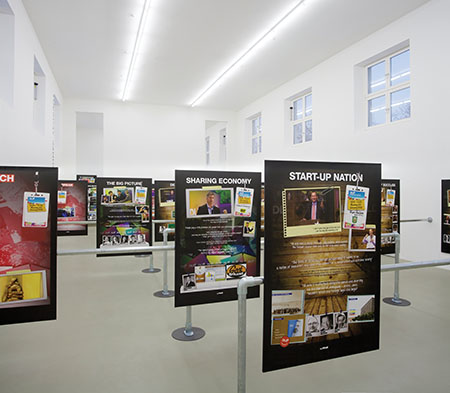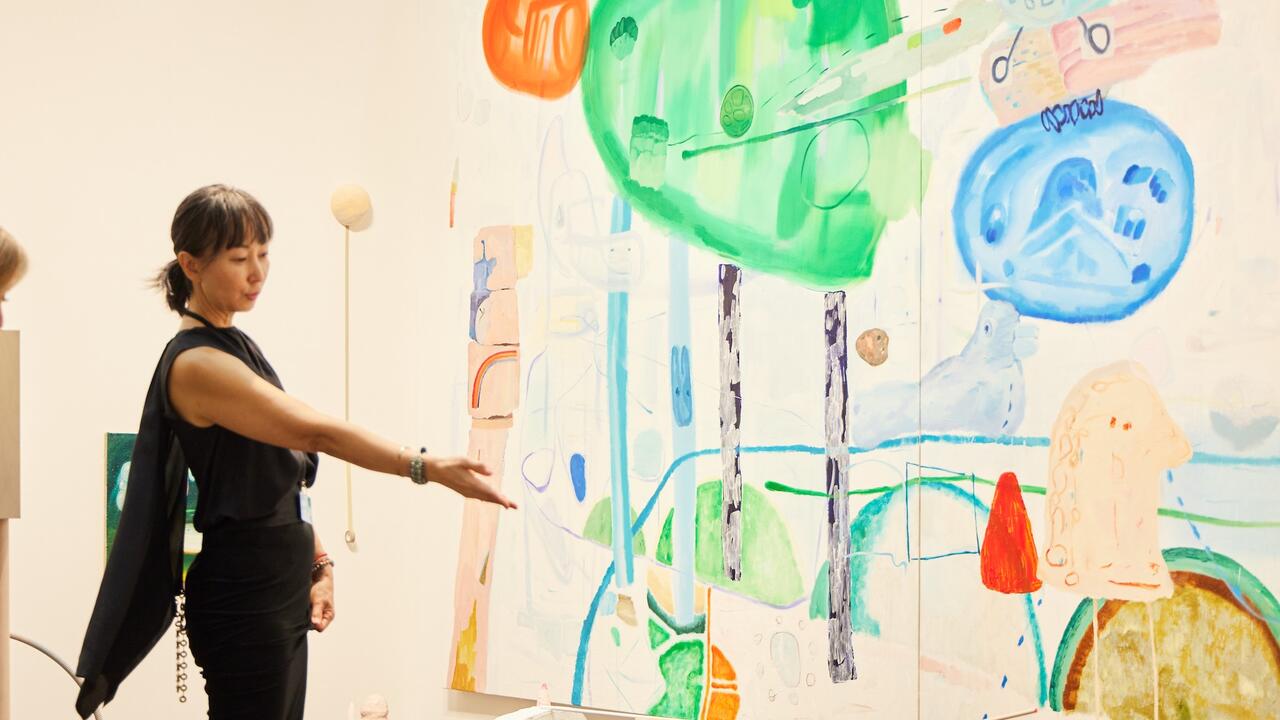Simon Denny

Produced by the German magazine empire Hubert Burda Media, the DLD conference (Digital-Life-Design) is something like a boutique, tech-driven TED event and an unofficial pre-game show for the World Economic Forum. Each January, thought leaders from every field engage with the digital economy, from world health to meme interpretation, convening in Munich for a lavish series of intimate summits and pitch sessions. The boldest-faced names are typically heads of online multinational corporations whose annual revenues outweigh the GDPs of island nations – information oligarchs whose very presence (at the conference and on Earth) signifies a multitude of moral quandaries orbiting greed, control and privacy. They also signify things commonly thought of as, if not qualitatively good, then at least quantitatively valuable: change, progress, the future.
Artists, who by necessity live and work amid the gyre of all of the above (including the lives of the super rich), are also an integral part of the conference. In 2012, Hans Ulrich Obrist gathered a stable of digitally minded artists – including Daniel Keller and Nik Kosmas, Oliver Laric, and John Nash – for a session titled ‘Ways Beyond the Internet’. Simon Denny, an influential contemporary of this crew, was not there. Nevertheless, his recent exhibition at Kunstverein Munich (a 15-minute walk from the former bank-turned-Batcave where DLD is held) was a comprehensive, highly editorialized account of the proceedings of the DLD conference of the previous year. The artist’s signature waist-height metal bars snaked through the entirety of the museum’s galleries. Affixed to them and hung on surrounding walls were 89 canvases encapsulating the 2012 gathering, whose titular theme, ‘All You Need Is … Data?’, Denny appropriated for his show’s title, ‘All You Need Is Data – The DLD Conference 2012 Redux’.
From ‘Registration’ to the final ‘Keynote’, and all the panels, breaks and musical interludes in between, Denny distilled each hyper-programmed interval of the conference into a flat info-graphic built of pull-quotes, official graphics, candid photographs and other documentation. He pored over every hour of raw footage (each session had already been edited into versions published online), mining them for aphorisms, assertions, predictions and other pithy comments that best caricature, today, the specific themes and trends coursing through the high powered minds of one year ago, and to show how all of this washes together as a highfalutin corporate din.
The viewer was able to navigate the installation – and in turn the conference – in one way only: chronologically, from start to finish, corralled by the railings adorned with screen-like, fabricated paintings. With a ‘Wall’ logo subtly stamped on the bottom of each, they also resembled outdoor advertisements. And they even registered as ethnographic charts of business jargon used to package and sell ‘now’, one year after the fact.
The installation offered itself as market research on the segment of society that, in fact, steers markets and creates new ones. Comments printed on the canvases ranged from the nakedly self-aggrandizing (‘Bavaria is the centre of the Digital revolution in Germany, and in Europe,’ claimed by a local government official) to the refreshingly contradictory (‘I think it’s really a mistake to point to a “digital revolution” and I hear this term a lot at this conference’), the matter-of-factly hubristic (‘Apple is really leading in mobile’) to the ironically self-dismissive (‘I never look in the rear-view mirror. It’s the next thing I’m always focused on’), the fatalistically fetishistic (‘If you’re not started by 22, funded by 23 and able to retire by 24–25, then you’ve failed’) to the poetically prophetic (‘This year we may see a billion-dollar IPO from Facebook’).
Like The Jetsons, Denny’s installation shows us a great rendering of the future: one that is blithe, imaginative and, more often than not, bound to be proven wrong. As commentary on an industry that trades in information, and commentary that is composed of this very information, Denny’s installation reads as a structuralist memento mori. One canvas made this forecast: ‘We should be able to say whether the Higgs boson exists within a year.’ Of course, six months later, news of the particle’s conjectural discovery sprang into the headlines. Abetted by hindsight, Denny incorporated this point as the perfect example of how quickly the reception of reality can recast a radical idea as a dormant fact. The work makes a comedy out of mankind’s slowness and ignorance in the face of an omniscient universe.
Four days after Denny’s exhibition closed, CERN tentatively proved the 2012 particle under scrutiny to be the Higgs boson. If truth is beauty, and beauty truth, then this was planned obsolescence at its most beautiful (and recombinant).













